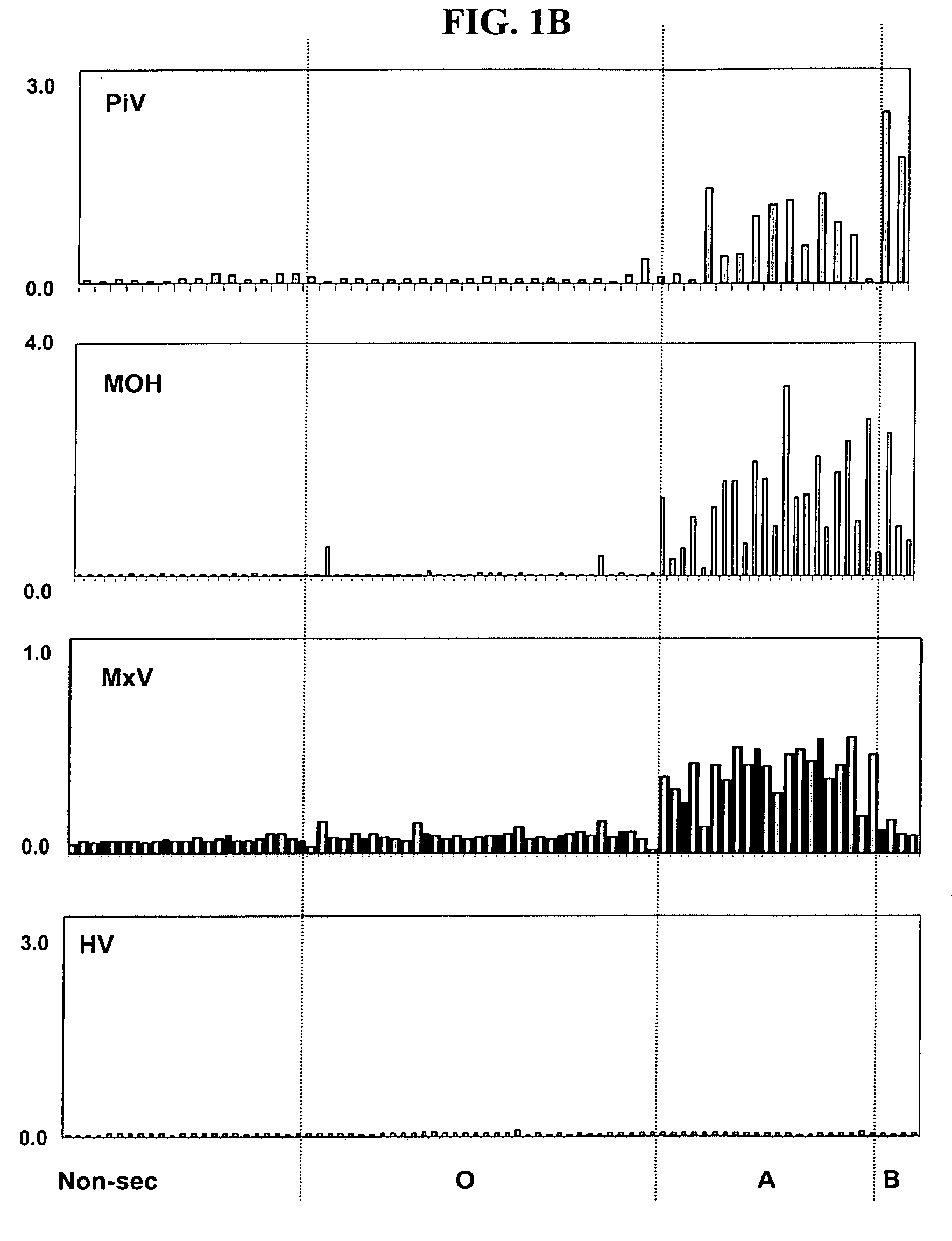Antigenic binding patterns of norovirus to human histo-blood group antigens
a technology of antigen binding and norovirus, which is applied in the field of noroviruses, can solve the problems of not being permanent, re-infection can occur, and limited knowledge of norovirus, and achieve the effect of reducing binding
- Summary
- Abstract
- Description
- Claims
- Application Information
AI Technical Summary
Problems solved by technology
Method used
Image
Examples
example 1
[0186] A test was conducted to measure the binding by one or more recombinant noroviruses with blood antigens in human saliva samples.
[0187] Human subject phenotypes: The human subjects' phenotypes of histo-blood group antigens were determined by EIAs using monoclonal antibodies specific to Lea, Leb, A, B and H blood group antigens. Salivary anti-norovirus IgA was determined by EIAs using recombinant norovirus capsids as coating antigens.
[0188] Saliva samples were diluted at 1: 1,000 in PBS and then coated onto microtiter plates (Dynex Immulon) overnight at 4° C. After blocking with 5% Blotto, monoclonal antibodies specific to Lewis a, Lewis b, H type 1, type A, and type B antigens were added. MAbs BG-4 anti-H type 1, BG-5 anti-Lea, and BG-6 anti-Leb were purchased from Signet Pathology Systems (Dedham, Mass.). MAbs BCR9031 anti-H type 2, BCR 9010 anti-A, and BCRM 11007 anti-B were purchased from Accurate Chemical & Scientific Corporation (Westbury, N.Y.). After incubation for 1 h...
example 2
[0194] A test was conducted to demonstrate that the binding of a norovirus to a blood antigen in its natural binding pattern is inhibited and prevented by contacting the norovirus with a compound known to bind to the determinant binding site in the norovirus capsid. The Norwalk Virus (NV) is known to bind with the H antigen and the A antigen (that is, these antigens are in its binding pattern). Recombinant NV capsid protein at ˜1.0 μg / ml in PBS was coated into the well(s) of a microtiter plate (Dynex Immulon, Dynatech). After blocking, a MAb 9C3, known to bind to the determinant binding site of the NV, was applied to a first group of the NV targets. A second group of the NV targets were left untreated. After incubation, the first set of NV targets was washed five times with PBS. Saliva from a person of secretor-A phenotype was prepared as in Example 1, and applied to both the first and second groups of NV targets. After incubation, both groups of NV targets were detected with an A-a...
PUM
| Property | Measurement | Unit |
|---|---|---|
| pharmaceutical composition | aaaaa | aaaaa |
| concentration | aaaaa | aaaaa |
| electron microscopy | aaaaa | aaaaa |
Abstract
Description
Claims
Application Information
 Login to View More
Login to View More - R&D
- Intellectual Property
- Life Sciences
- Materials
- Tech Scout
- Unparalleled Data Quality
- Higher Quality Content
- 60% Fewer Hallucinations
Browse by: Latest US Patents, China's latest patents, Technical Efficacy Thesaurus, Application Domain, Technology Topic, Popular Technical Reports.
© 2025 PatSnap. All rights reserved.Legal|Privacy policy|Modern Slavery Act Transparency Statement|Sitemap|About US| Contact US: help@patsnap.com



